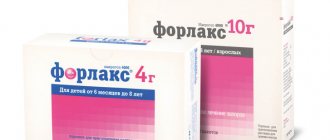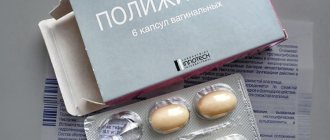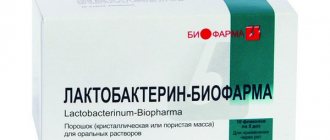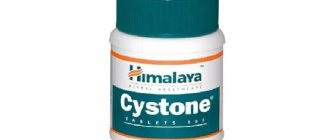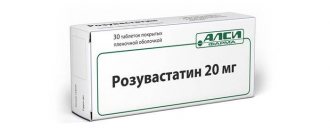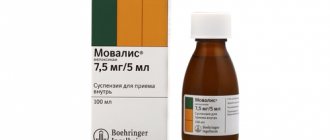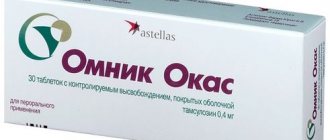- November 2, 2018
- Other drugs
- Inna Fish
The drug belongs to the group of vitamins that are obtained synthetically. It is an analogue of vitamin K. “Vikasol” is available in tablet form for oral administration.
A chemical substitute for water-soluble vitamin K. The drug takes part in the formation of prothrombin. Helps stabilize blood clotting.
Pharmacological properties
"Vikasol" has a hemostatic effect. Due to the increased production of plasma coagulation factors in the liver, it helps to increase blood clotting.
According to the instructions for use, “Vikasol” is involved in the production of prothrombin and proconvertin. In addition, it activates the enzyme K-vitamin reductase. This biologically active substance stimulates vitamin K and ensures its participation in the hepatic synthesis of coagulation factors of hemostasis.
The drug has hemostatic effects, which manifest themselves a maximum of eighteen hours after taking the medication.
According to the instructions for Vikasol, the tablets are quickly absorbed, and the connection with plasma proteins is reversible. In small concentrations it can accumulate in the liver, heart muscles and spleen. Penetrating into the body, it is converted into vitamin K. The most intensive transformation process occurs in skeletal muscles and myocardium. Slightly less - in the kidney tissue.
After passing through the metabolic pathway, it is oxidized in the liver to the diol form. It is excreted as metabolic products by the kidneys and intestines, along with bile. Due to the production of vitamin K by intestinal microflora, increased concentrations of this biologically active substance are observed in the feces.
Contraindications
The use of Vikasol is contraindicated in the following cases:
- individual intolerance to individual components of the drug;
- increased blood clotting;
- tendency to thrombosis;
- disturbance of sugar metabolism;
- severe liver dysfunction.
Tablets are not recommended for children under three years of age
They should be used with caution in pregnant and lactating women. If the patient is diagnosed with diseases that lead to impaired outflow of the biliary tract, then only the injectable form of the medicine should be used
Caution should be exercised if the following medications are already prescribed along with Vikasol:
- indirect anticoagulants;
- broad-spectrum antibiotics;
- quinidine;
- salicylates;
- quinine;
- sulfonamides;
- cholestyramine;
- sucralfate.
"Vikasol" is an over-the-counter medicine. Its exact analogues are not available on the pharmaceutical market. But as an alternative, the pharmacist can offer other drugs that have a hemostatic effect: “Etamzilat” (“Dicynon”) or “Tranexam” (tranexamic acid).
Other medicines
Article updated: 06.27.2019
Dear users!
The materials posted on this page are informational in nature and are intended for informational purposes. Please do not use them as medical advice! Consult a specialist before taking any action.
Release forms
1 ml - ampoules (10) - cardboard packs. 1 ml - dark glass ampoules (10) - contour cell packaging (1) - cardboard packs. 1 ml - dark glass ampoules (10) - contour cell packaging (1) - cardboard packs. 10 - contour cell packaging (1) - cardboard packs. 10 - contour cell packaging (2) - cardboard packs. 10 - contour cell packaging (3) - cardboard packs. 30 - dark glass jars 10 - contour cell packaging (2) - cardboard packs. 20 - contour cell packaging (1) - cardboard packs. 10 ampoules of 1 ml per pack 10 ampoules of 2 ml per pack 2 ml - ampoules (10) - cardboard packs. solution for intramuscular administration of 10 mg/ml: 1 ml amp. 10 pieces. pack of 10 ampoules of 1 ml pack of 10 ampoules of 2 ml
Description of the dosage form
clear, colorless or slightly colored yellow or green-yellow liquid. Solution for intramuscular administration, solution for intramuscular administration, solution for intramuscular administration, tablets
Compound
menadione sodium bisulfite 10 mg Menadione sodium bisulfite 10 mg Menadione sodium bisulfite/VIKASOL/ 10 mg; Auxiliary ingredients: sodium hydrosulfite, sodium disulfite, acetic acid, water for injection of menadione sodium bisulfite trihydrate 10 mg; Auxiliary ingredients: sodium disulfite, hydrochloric acid solution, water
Vikasol indications for use
Hypoprothrombinemia (prevention and treatment) caused by vitamin K deficiency: impaired coagulation due to a decrease in the content of factors II, VII, IX, X, while taking certain drugs (coumarin and indandione derivatives, salicylates, some antibiotics), obstructive jaundice, malabsorption syndrome, celiac disease , dysfunction of the small intestine, pancreas, resection of the small intestine, prolonged diarrhea, dysentery, Crohn's disease, sprue, ulcerative colitis, abetalipoproteinemia, parenteral nutrition, in newborns receiving unfortified formula or who are exclusively breastfed. Hemorrhagic disease in newborns (prevention and treatment), incl. in high-risk newborns - those born to mothers who received anticoagulants (including phenytoin).
Vikasol contraindications
Hypersensitivity, hypercoagulation, thromboembolism, hemolytic disease of newborns. Caution. Glucose-6-phosphate dehydrogenase deficiency, liver failure, pregnancy
Storage conditions
- store at room temperature 15-25 degrees
- keep away from children
- store in a place protected from light
Vikasol is an effective medicine that belongs to the group of vitamins produced synthetically. It is a water-soluble analogue of vitamin K. The pharmacological action of this drug is based on its participation in the formation of prothrombin and the normalization of blood clotting, for which Vikasol is prescribed for bleeding of various types. This medicine is available in several forms: in the form of tablets of 0.015 grams, ampoules of 1 ml with a 1% solution and in powder form.
Indications
According to the instructions for use for Vikasol, the tablets are used for the following conditions and diseases:
- Obstructive jaundice (deposition of yellow bilirubin in the mucous membranes and skin, which is associated with difficult release of pigment into the gallbladder and the flow of bile into the duodenum).
- Hepatitis (inflammatory liver diseases, usually of viral origin).
- Prolonged nosebleeds.
- Thrombocytopenic purpura (a type of hemorrhagic diathesis, which is characterized by a lack of red blood platelets, often provoked by immune mechanisms).
- Radiation sickness (appears after exposure to different types of radiation and is characterized by symptoms depending on the type of damaging radiation and its dosage).
What else does Vikasol help with? The medication is prescribed for the following diseases:
- Pulmonary hemorrhage (a serious disease that is caused by the release of blood into the lumen of the bronchi and requires medical attention).
- Uterine bleeding (blood loss from the uterine cavity that is not associated with anatomical changes in the woman’s reproductive organs).
- Bleeding caused by wounds.
- Blood loss due to tuberculosis.
- Bleeding caused by septic conditions.
- Poisoning with indirect anticoagulants.
- Hemorrhagic manifestations in premature infants (pathological conditions characterized by increased bleeding as a result of insufficiency of one or more elements of hemostasis).
- Surgical interventions.
Instructions for use Vikasol
A synthetic analogue of fat-soluble vitamin K, Vikasol (Menadione sodium bisulfite), has hemostatic properties. It is involved in the synthesis of proteins that provide sufficient hemocoagulation. A lack of this vitamin can lead to internal hemorrhages. Doctors monitor fibrinogen levels in patients' blood to help prevent any risks associated with vitamin K deficiency.
Composition and release form
Vikasol is available in the form of tablets and a 1% solution for intramuscular injection in ampoules of 1 or 2 ml. The tableted drug is packaged in glass vials of 30 tablets or blisters of 10 pieces. One package contains 2 or 3 blisters. Ampoules are packed in 10, 50, 100 pieces in a cardboard box. The instructions indicate the following chemical composition of the drug:
| Release form | Active substance | Auxiliary components |
| Tablet | sodium menadione bisulfite 0.015 g | Lactose, potato starch, sodium pyrosulfite (E223), calcium stearate, talc, emulsion KE-10-12 |
| Ampoule 1 ml | sodium menadione bisulfite 10 mg | E 223, 0.1 M aqueous solution of hydrogen chloride, water for injection |
Pharmacodynamics and pharmacokinetics
Menadione sodium bisulfite increases the body's homeostasis by stimulating the liver's production of plasma coagulation factors (proteins) such as:
- Prothrombin. Promotes the formation of a blood clot, closing the capillaries and stopping blood loss. The enzyme is active when there is a sufficient amount of potassium ions.
- Proconvertin (convertin). Converts prothrombin into thrombin with the participation of potassium.
- B-globulin. Activates the process of homeostasis. One of the most significant in the formation of prothrombinase.
- Stewart-Prower. Together with B-globulin, it enhances the coagulation process (production of fibrin - the basis of a blood clot).
After taking a tablet or administering a solution of Vikasol intramuscularly, the drug quickly penetrates the bloodstream. Its accumulation by body tissues is minimal. The active substance of the tablets undergoes activation of metabolic processes in the liver, where it is oxidized to metabolites. Accumulation and withdrawal:
- The drug is excreted from the body mainly by the kidneys. A smaller part is excreted with bile.
- When injecting Vikasol solution, the active substance accumulates in the liver, spleen and middle muscle layer of the heart.
- The metabolic process occurs mostly in the myocardium, less in the kidneys.
- Up to 70% of metabolites are excreted in the urine.
- Etamzilat - instructions for use, indications, side effects, analogues and price
- Uterine hemostatic drugs
- Dicynon - instructions for use, composition, indications, side effects, analogues and price
Indications for use
The drug Vikasol is used for the treatment and prevention of diseases associated with hypoprothrombinemia (blood clotting problem). Prothrombin deficiency can be congenital or acquired. Hypoprothrombinemia can develop due to:
- liver diseases;
- vitamin K deficiency;
- use of vitamin K antagonists (coumarins, salicylates, some antibiotics) for the treatment of other diseases.
Vikasol is often prescribed to women during menstruation in case of prolonged heavy discharge (menorrhagia). In case of serious injuries and surgical interventions, the use of the drug prevents large blood loss. Doctors use this medicine as part of complex therapy for:
- vitamin K hypovitaminosis;
- prolonged diarrhea;
- dysentery;
- jaundice;
- hepatitis;
- liver cirrhosis;
- bleeding accompanying peptic ulcer of the stomach and duodenum;
- prolonged nosebleeds and hemorrhoids;
- bleeding gums;
- tuberculosis;
- radiation sickness, etc.
What restrictions does the drug have?
According to the instructions for use of Vikasol, it is known that the drug has certain limitations:
- Thromboembolism (a pathological condition in which blood clots suddenly clog the branches of the pulmonary artery).
- Hypercoagulation (a condition of the blood system in which its coagulation system exhibits increased activity).
- Hemolytic disease of newborns (damage to the hematopoietic system, in which its clotting actions exhibit increased activity).
Side effects
In general, the medicine is well tolerated by patients, but sometimes the following side effects are observed:
- disorders in the blood system (hemolytic anemia, hemolysis in the presence of congenital enzymopathies);
- allergies in the form of skin rash, itching, peeling, spasm of bronchioles;
- vestibular disorders, weakness, taste disturbances;
- increased bilirubin levels;
- drop in blood pressure;
- cardiopalmus.
It is extremely rare that an overdose may occur when taking large doses of Vikasol. It manifests itself with the following symptoms:
- increase in prothrombin index;
- increased blood bilirubin levels;
- convulsions.
How to take the medicine correctly?
According to the instructions for use of Vikasol, it is known that the average daily dosage of the drug for adults varies from fifteen to thirty milligrams, for babies up to twelve months - from two to five mg.
Children under two years old - six milligrams, from three to four years old - eight mg, children from five to nine years old - ten mg, adolescents from ten to fourteen years old - fifteen milligrams.
The tableted medication should be taken no more than three times a day. The duration of therapy, daily and single dosing of Vikasol is prescribed by the attending doctor on an individual basis. What else do Vikasol tablets help with?
Indications and contraindications
Indications for the use of Vikasol can be various diseases. Among them:
cirrhosis of the liver;
- diarrhea, including prolonged;
- jaundice;
- acute hepatitis;
- bleeding after surgery, trauma, wounds;
- nosebleeds, hemorrhoids;
- hemorrhagic disease in newborns;
- uterine bleeding during puberty and before menopause.
During menstruation
Painful periods, which are accompanied by heavy bleeding, bother every third woman. As a rule, in this situation they have to resort to tablet drugs. “Vikasol” during menstruation is considered the most famous medicine that helps not only to quickly stop bleeding, but also to correct the cycle.
“Vikasol” during menstruation is a real panacea for severe bleeding that occurs due to intermittent and painful uterine contractions, otherwise called dysmenorrhea. The disease may be accompanied by pain in the lower abdomen, nausea and even vomiting.
According to the instructions for Vikasol, it is known that sodium menadione bisulfite, which is included in the structure of the drug, relieves spasms of the uterus, relaxes it, and also enhances blood clotting, thereby reducing bleeding. The medicine stops or reduces the amount of discharge during menstruation. "Vikasol" can shorten its duration or delay its onset. But it is not able to completely stop blood loss; its effect shortens menstruation as much as possible.
The medicine for menstruation has the ability to reduce the amount of discharge if it is strong. But the drug during menstruation does not always provide the desired result. Therefore, you should not use “Vikasol” during menstruation on your own; you should undergo an examination by a gynecologist. You must always remember that only a medical specialist can prescribe any medicine.
It is important to remember that any irregularity in the menstrual cycle indicates an abnormal functioning of the body that needs to be eliminated. During menstruation, Vikasol is used according to the following scheme:
- admission period - from three to four days;
- re-use after a four-day break;
- It is not recommended to use to delay menstruation.
Forced, unnatural cancellation of menstruation has a detrimental effect on the entire body.
Dosages
The tablets are taken between meals with plenty of drinking water. For infants, the drug is administered parenterally. The dosage of the medicine is determined according to the following table.
Table - Vikasol dosage by age
The maximum amount of medication that an adult patient can take at one time is 30 mg. No more than 60 mg of Vikasol is allowed per day, divided into two or three doses. (For newborns - no more than 4 mg).
When treating heavy periods, the drug should be taken several days before the expected date of menstruation. The total treatment time is three to four days.
It is not recommended to take the drug without consulting a gynecologist. Heavy periods can be caused by organic pathology in the uterus or hormonal disorders. In this case, Vikasol will only reduce the symptoms, but will not eliminate the problem.
"Vikasol" during pregnancy
Some women are at risk of accidental miscarriage in the first three months. Signs appear in the form of vaginal discharge. A medical specialist recommends Vikasol for bleeding from the uterine cavity, having analyzed all pathological phenomena.
Women in an “interesting situation” should not self-medicate, as this can lead to serious consequences. In the last three months of pregnancy, the use of this medication is not advisable, since the placental barrier has low permeability.
In tablet form, the daily dosage of the drug should not exceed two tablets with a time interval of twelve hours for three to four days. In the future, it is necessary to take a break and then continue treatment. "Vikasol" in the form of tablets is convenient for therapy not only in the hospital, but also at home. Particular attention should be paid to the fact that the drug is prohibited for patients with severe blood clotting and with a high risk of blockage of blood vessels by blood clots.
To prevent uterine bleeding, which can occur in the initial stages of labor in women, medication can be prescribed by a doctor during the first contractions.
The drug is also used for preventive purposes during pregnancy. As a rule, the largest number of miscarriages occur in the first three months of a woman’s “interesting situation.” Therefore, to stop uterine hemorrhage, doctors prescribe the use of Vikasol, which is aimed at maintaining the integrity of blood vessels, as well as preventing and stopping bleeding.
Release forms
"Vikasol" is produced in the form of two pharmaceutical forms.
- Pills. Contains 0.015 g of menadione sodium bisulfite. In addition, this dosage form contains fillers: sucrose, starch, calcium stearate and others.
- Ampoules. The injections contain 1 ml of solution containing 0.01 g of menadione. This release form is intended for intramuscular administration only.
For a certain period of time, the active substance of the drug is bound to plasma proteins. “Vikasol” penetrates well into almost all tissues of the body, especially high concentrations are found in the heart muscle, striated muscles, spleen, and liver. Most of this drug is excreted from the body in the urine.
After ingestion of the tablet form of the drug, it is rapidly absorbed in the gastrointestinal tract. Menadione acts within eight hours after entering the blood.
Adverse reactions
If used incorrectly, the drug can provoke unpleasant conditions, for example:
- Hypervitaminosis (increased concentration of vitamin K).
- Nausea.
- Vomiting.
- Hyperemia (a condition caused by excessive filling of the capillaries with blood, which as a result causes the development of redness in a certain area).
- Jaundice (jaundice staining of the skin and visible mucous membranes, caused by an increased concentration of bilirubin in the blood and tissues).
- Tachycardia (increased heart rate from one hundred beats per minute).
- Hyperhidrosis (a pathological condition that is accompanied by increased sweating throughout the body).
- Bronchospasm (a pathological condition that occurs when the smooth muscles of the bronchi contract and their lumen decreases).
- Itching.
- Erythema (severe redness of the skin caused by dilation of capillaries).
- Urticaria (a disease of allergic origin, which is characterized by the appearance of blisters on the surface of the skin and mucous cavities).
- Cramps.
Side effects of Vikasol
In some cases, side effects of Vikasol have been observed, manifesting symptoms in patients:
- redness (flushing) of the face, skin rash (urticaria), itching, bronchospasm;
- hemolytic anemia, hemolysis in newborns with congenital deficiency of glucose-6-phosphate dehydrogenase;
- pain and swelling at the injection site, allergic reactions on the skin;
- hyperbilirubinemia, jaundice;
- dizziness, drop in blood pressure, cold sweat, palpitations, distortion of taste.
Contraindications
- increased blood clotting,
- thromboembolism,
- hypersensitivity to menadione.
Overdose
In case of overdose, in rare cases, hypervitaminosis K occurs, manifested by hyperprothrombinemia and hyperthrombinemia. In isolated cases, infants develop toxicosis, manifested by convulsions.
Storage conditions
The medicine is dispensed without a prescription from a medical specialist. The drug "Vikasol" must be kept in a dry place, protected from light, inaccessible to children at a temperature not exceeding twenty-five degrees.
The cost of the drug varies from 30 to 65 rubles. The shelf life of the medicine is thirty-six months from the date of issue. After this time, the drug must be disposed of according to the instructions for use.
Vikasol: compatibility with other medications
The drug has the ability to reduce or completely block the effect of indirect anticoagulants. When used in combination with a group of broad-spectrum antibiotics, sulfa drugs, quinidine, quinine, salicylates and increasing their dosage, it is necessary to increase the dosage of the vitamin K drug. Synchronous use with drugs that provoke hemolysis increases the manifestation of adverse symptoms.
Pills
The cost of the drug depends on the form of release. The average price in pharmacies today ranges from 24 to 69 rubles.
"Vikasol": analogues, reviews
The following drugs are analogues of the drug:
- "Benefix".
- "Gemoktin."
- "Agemphil."
- "Dicynon."
- "Immunin."
- "Caprofer".
- "Thrombin."
Before changing the drug, you should consult a specialist.
Patients who have already tried the drug "Vikasol" leave a variety of responses, most of them are positive. People note the increased efficiency and immediate effect of the drug. Reviews of Vikasol during menstruation are also positive.
Some women use the action of the medicine to reduce the amount of discharge by taking one tablet in the morning in the first two days. However, according to reviews, it is known that they record adverse reactions and recommend use only after consultation and with mandatory dosage compliance.
Vikasol: instructions for menstruation
The regimen and dosage of taking the drug depend on the tasks that need to be solved and the existing problems. To quickly eliminate bleeding, intramuscular injection is indicated. To prevent blood loss before surgery, the tablets are taken the day before in the dosage indicated by the doctor. If there is a risk of high blood loss during childbirth, Vikasol is also taken in advance.
How to take Vikasol to stop menstruation
In exceptional cases, Vikasol can be used to stop menstruation. The hemostatic agent is started on the first day of menstruation, 2 tablets at an equal interval of time. An alternative is one injection of the drug per day. In this case, menstrual bleeding becomes scanty and goes away in 2-3 days. The drug is taken throughout this period.
If blood loss occurs due to a vitamin K deficiency, stopping your period will be even easier and faster. Against the background of an increase in the density of the biological fluid, its meager release occurs through damaged blood vessels in the uterus. Blood loss in this case is minimal. Vikasol should not be used frequently during menstruation. This is dangerous to health and requires constant monitoring of blood clotting levels.
How to take Vikasol during heavy periods
To alleviate the condition during heavy menstruation, to prevent the development of anemia and weakness, you can take 2-3 tablets of the drug per day throughout the entire period of uterine bleeding. Vikasol for heavy periods will begin to act after the first dose after 10 hours. Often, to increase the contractility of the uterus, the drug Oxytocin is prescribed in combination. This will protect the woman from serious blood loss and alleviate the condition physically.
However, in this situation, this method cannot be abused. Some blood clots and capillaries will remain in the uterine cavity and can cause an inflammatory process. Therefore, doctors recommend that if heavy bleeding recurs, you should be examined by a gynecologist.
How to take Vikasol to delay your period
Typically, Vikasol is rarely prescribed to delay menstruation. There is a more effective hormonal drug Duphaston, which, when taken correctly, allows you to delay the onset of critical days by 3-4 days.
If you still use hemostatic drugs, you should start taking them 2-3 days before the expected date of your critical days. To increase the effectiveness of Vikasol, drink 1 g of ascorbic acid per day in parallel. In this way, you can postpone menstruation by 2-3 days.
Risk of combining two substances
Treatment with the drug at the stage of active intoxication carries certain risks:
- The body often reacts with hypersensitivity to the components of the drug. Rapid allergic reactions include: drop in blood pressure, dizziness, weakness, feeling of tightness in the chest, sudden sweating. Later occurs: anemia, increased amount of prothrombin, increased bilirubin concentration, tachycardia.
- Against the background of intoxication, it is difficult for a person to adequately assess the severity of the condition and the required dose of medication. In this case, it is better to carry out all therapeutic measures under the supervision of a doctor.
- The resulting consequence is an overdose of the drug, the occurrence of thromboembolism. An insufficient dose to stop bleeding due to prolonged alcohol intake leads to the development of anemia or massive blood loss.
It is impossible to calculate in advance how the body will behave when mixing medications with alcohol. If once such treatment was without consequences, there is no guarantee of a successful outcome in another case.
Use in children
Hemorrhagic disease of newborns is the case when this drug is prescribed to children without a shadow of doubt. The disease is associated with an acute lack of vitamin K and manifests itself in the first 72 hours of a baby’s life. The bleeding it causes in newborns can be from the umbilical wound, on the skin, in the stomach/intestines, or even hemorrhages in the brain.
How often and in what dosage is the drug taken? For three days in a row, a newborn baby is given intramuscular injections, the daily dose of medication is up to 4 mg.
Vikasol and beer
Regardless of the form of Vikasol, taking it with beer is strictly prohibited by manufacturers and doctors. Both substances, even in minimal dosages, affect the patient’s body, especially his liver. Poisoning of hepatocytes can provoke the development of hepatosis, fibrosis or cirrhosis.
Doctors diagnose red blood cell aggregation, indicating deformation and gluing. All this can lead to thrombus formation and vascular embolism. The state of intoxication and hangover also increases.
Bottom line
This article discussed in detail the drug "Vikasol", instructions for use, analogues. In fact, all drugs are similar to each other in their indications and effectiveness. The price is quite reasonable even for the drug “Vikasol”. Analogues are cheap, but, as it was found out, not all of them. Medicines are often several times more expensive. Then the question arises: is it worth buying an analogue if the effect is the same, but the price is much higher?
Of course it's not worth it. But situations arise when the drug “Vikasol” is simply not available in the pharmacy, and then you have to buy an analogue, which costs a lot of money. But still, the most important thing is that the result from taking the analogue will not be worse. Ultimately the choice is up to the buyer.
How does Vikasol work?
In a simplified interpretation, the drug works to increase the rate of blood clotting. Its components directly affect liver cells that produce the substance prothrombin. It is what is responsible for the thickness of the blood, and consequently reduces the intensity of bleeding.
Vikasol tablets for menstruation can reduce blood loss during menstruation and regulate the cycle as a whole. In addition to targeted action, the drug normalizes blood renewal processes and prevents the development of anemia. The medicine can be used both to reduce menstrual flow and to delay the onset of menstruation.
Indications for use of "Ditsinon"
Like Vikasol, Dicinon is prescribed to prevent bleeding and stop it.
In more detail, this remedy is prescribed for the following diseases:
- Capillary bleeding.
- Intracranial hemorrhages.
- Hemorrhagic diathesis.
- Repeated retinal hemorrhages.
- Werlhof's disease.
- Heavy menstruation.
The drug also has contraindications, which you should pay close attention to before using the drug for the first time. So, the contraindications are as follows:
- Thrombosis.
- Intolerance to the components of the drug.
- Thromboembolism.
Vikasol tablets to stop menstruation
Currently, there is a sufficient list of drugs used in gynecological practice for hemostatic purposes. Vikasol is a synthetic analogue of a substance involved in the formation of prothrombin, which helps normalize coagulation.
If a girl does not have enough of this natural remedy, then stopping her period with Vikasol is quite possible. But the decision to stop menstruation in this way must be made by a doctor after a detailed examination.
All drugs associated with stopping bleeding are taken only under medical supervision due to the risk of causing harm due to their improper or inappropriate use.
Drug Vikasol description
The hemostasis system, of course, provides a balance between maintaining the liquid state of the blood, on the one hand, and preventing bleeding through rapid thrombus formation, on the other.
The blood coagulation system is responsible for the process of preventing bleeding in our body.
To treat diseases caused by blood clotting disorders, two main groups of drugs are used:
1.
Drugs that increase blood clotting - hemostatics.
2.
Drugs that help reduce blood clotting - so-called antithrombotic drugs.
The first group includes coagulants designed to stimulate the processes of fibrin thrombus formation.
Sometimes local phenomena are observed when the drug is administered intramuscularly. They manifest themselves as swelling, redness and tenderness at the injection site. Pigmentation may appear when Vikasol is repeatedly administered, especially in the same area of the buttock
Therefore, you need to pay special attention to the method of administering the drug and be careful
In addition, jaundice and hyperbilirubinemia may be observed in biochemical blood tests. Rarely there is an increase in heart rate, changes in taste sensations, and the appearance of sweating.
Contraindications for use
The main contraindications are pregnancy and liver failure. It is not directly prohibited, but it is not recommended to use the drug together with a large dose of alcohol.
It is also contraindicated to take the medicine if you have the following pathologies:
- hypercoagulation syndrome (increased activity of the blood coagulation system);
- thromboembolism;
- jaundice of newborns;
- hypersensitivity to the components of the drug.
How to drink Vikasol during menstruation? How to stop bleeding? These are common questions.
Side effects
If the drug is used excessively, the following undesirable reactions may occur:
- itching, dermatitis, redness of the skin;
- bronchospasm (narrowing of the bronchi caused by muscle contraction in response to a number of factors);
- when prescribing injections - redness of the skin near the injection site, allergies;
- migraine;
- dizziness;
- drop in blood pressure;
- tachycardia (painful rapid heartbeat).
In rare situations, newborns have developed seizures.
What is Vikasol
It is listed in the pharmacological group of indirect-acting coagulants. The active substance in the composition helps to normalize and increase blood clotting, maintain hemostasis, enhance the production of prothrombin, and play an important role in other physiological mechanisms occurring in the body.
With its help, you can successfully treat bleeding: hemorrhoidal and uterine, as well as those provoked by surgery or injuries of varying severity. This is due to the fact that menadione sodium bisulfite actively affects the rate of blood clotting, promoting an increase in platelets in it.
Vikasol is also in demand in gynecology. In particular, it is often prescribed during the menstrual cycle in order to make the discharge less long and heavy, to stop or delay menstruation.
Using the drug to delay menstruation, normalize the amount of blood discharge, adjust the cycle, it is also possible to improve overall well-being these days, minimize the risk of developing anemia, and restore blood reserves.
Reviews about Vikasol
The main question that interests women is whether this medicine helps stop/delay menstruation? The opinions of patients and doctors are divided on this matter: the former talk about the success of such an experiment, the latter insist that it causes enormous harm to the body. The drug is definitely effective for heavy menstruation, Vikasol is also successfully used for hemorrhoids, the reviews are mostly positive.
Despite the presence of recommended patient characteristics, self-medication with Vikasol is still dangerous. Only a doctor can prescribe Vikasol for bleeding of one kind or another, having developed the correct regimen for taking the drug.
Analogs
There are suppositories and ointments on sale that are used topically (for example, in the treatment of hemorrhoids). They contain the same active ingredient.
There are also many analogues with similar properties. These are medications such as “Dicynon”, “Etamzilat”, “Recombinate”, “Thrombin”, “Tranexam”. They are more powerful hemostatic agents.
In addition, there are non-medicinal analogues. These include hemostatic preparations based on medicinal herbs:
- valerian;
- nettle;
- St. John's wort;
- horsetail;
- shepherd's purse;
- chamomile;
- Potentilla goose.
Vikasol in tablet form
The tablet form of the drug is very convenient for use directly at home. One tablet contains 15 mg of menadione, which acts as an active substance. The integral components of the drug are refined sugar, starch, sodium disulfite, calcium stearate.
The tablets are packaged not only in plastic blisters of 10 pieces, but also in glass jars. In the second case, the number of tablets is slightly larger - there are 30 of them in the jar. Next, the medicine must be packaged in cardboard packages of 30 pieces (1 jar or 3 blisters).
Reviews
I became acquainted with this drug several years ago. My doctor prescribed it to me because of poor blood clotting, since the drug can improve this indicator. The result is noticeable 10 hours after taking the tablet. By the way, the effect of injections is much higher.
Kasatova Daria, 38 years old
The first time I used Vikasol Sozh to stop uterine bleeding. Since then I have always kept this drug on hand. I won’t say that the bleeding stopped immediately and completely, however, it decreased and I didn’t have to have a transfusion.
Nikifirova Sofia, 32 years old
I use this drug to reduce bleeding during menstruation, but only in emergency cases and only according to Vikasol’s instructions.
I try not to abuse pills. Therefore, I take no more than 1-2 tablets per month. The effect is visible 10 hours after taking. Kristina Ryumina, 26 years old
Vikasol price
Vikasol is a well-known medicine of synthetic origin, which has a low cost. This is a significant advantage of the presented medicine, since some of its analogues do not belong to budgetary funds. It is sold in any pharmacy, however, Vikasol can only be purchased if the patient has an appropriate prescription from a doctor.
It should be noted that Vikasol can be purchased not only at a standard pharmacy. Today, the phenomenon of an online pharmacy is gaining popularity, however, you should be very careful when choosing it.
Application in gynecology
Application in gynecology
It is considered an auxiliary medicine for the female reproductive system, so Vikasol is often used to stop menstruation or reduce the amount of blood.
It comes in two types:
- tablet form;
- liquid form.
The difference is that if you take tablets, the effect of the drug is delayed, it begins to work only after 12 hours, in contrast to the liquid form, which acts almost instantly, due to the fact that the injection is administered directly into the muscle.
Interaction with other medications
If you take Vikasol and vitamin K antagonists (for example, Phenilin prescribed by a doctor) together, the drug will simply block their anticoagulant properties. When interacting:
- with mineral oils – the effect of the drug is reduced;
- with other drugs that have a hemolytic effect, the number of side effects increases;
- with antibiotics, sulfonamides or salicylates - the daily dose of Vikasol tablets may need to be adjusted.
